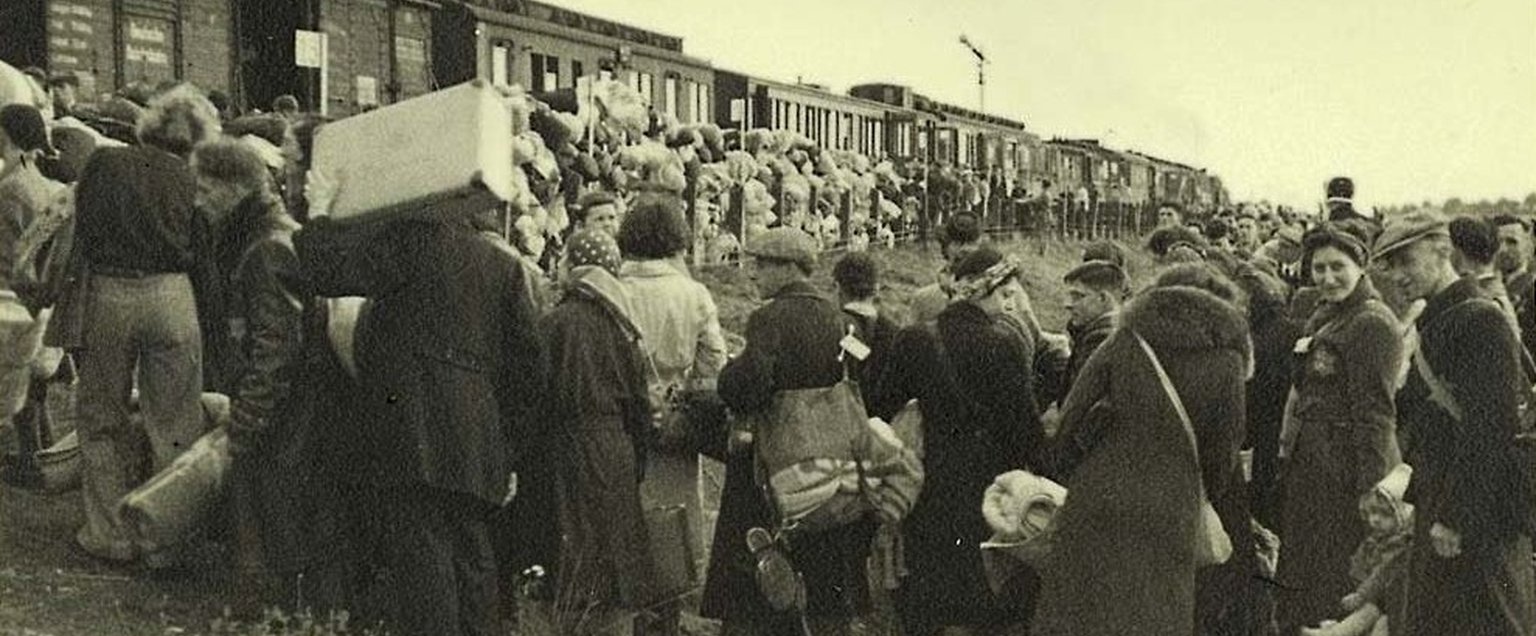It was the final transport from the Westerbork transit camp to the Auschwitz concentration and extermination camp.
Even in the Secret Annex, Anne Frank had been aware of the existence of Westerbork. She had learned about the war and the persecution of the Jews from the helpers and from radio broadcasts. On, B version, 9 October 1942, Anne Frank wrote in her diary: ‘Our many Jewish friends and acquaintances are being taken away in droves. The Gestapo are treating them very roughly and transporting them in cattle cars to Westerbork, the big camp in Drenthe where they're sending all the Jews.’ She added: ‘If it's this bad in Holland, what must it be like in those faraway and uncivilized places where the Germans are sending them? We assume that most of them are being murdered. The English radio says they're being gassed. Perhaps that's the quickest way to die.’
Arrival at Auschwitz
Anne Frank's final diary entry dates from 1 August 1944, three days before her arrest. The only information we have about what happened to Anne Frank in the six months between the arrest and her death in the Bergen-Belsen concentration camp comes from the testimonies of others. In an interview in 1979, Otto Frank, Anne's father, said about their arrival at Auschwitz: ‘I don't want to talk anymore about what I felt when my family was split up on arrival at the platform in Auschwitz.’
The people from the Secret Annex
Otto Frank survived the war. He was in the hospital barracks in Auschwitz when the camp was liberated by the Soviet army on 27 January 1945. The seven others from the Secret Annex did not survive the Nazi horrors. Hermann van Pels was murdered in the Auschwitz gas chambers in October 1944; Auguste van Pels died during a transport from Raguhn to Theresienstadt in April 1945; Peter van Pels died in Mauthausen on 10 May 1945; Fritz Pfeffer died in Neuengamme on 20 December 1944; Edith Frank died in Auschwitz-Birkenau on 6 January 1945; Margot and Anne Frank died in Bergen-Belsen in February 1945.
Otto Frank
Otto Frank arrived back in Amsterdam on 3 June 1945. On his return journey, he had learned that his wife had died in Auschwitz. Otto’s hope that his daughters might have survived the concentration camps was dashed in July 1945. Otto met with the Brilleslijper sisters, who had been imprisoned in Bergen-Belsen with Anne and Margot. They told him about the girls’ miserable last months and their deaths, due to illness and exhaustion.
Otto Frank dedicated the rest of his life to reconciliation and human rights around the world. He had Anne's diary published in countries all over the world and was instrumental in opening up the hiding place as a museum - as a warning from the past, with a focus on the future.
